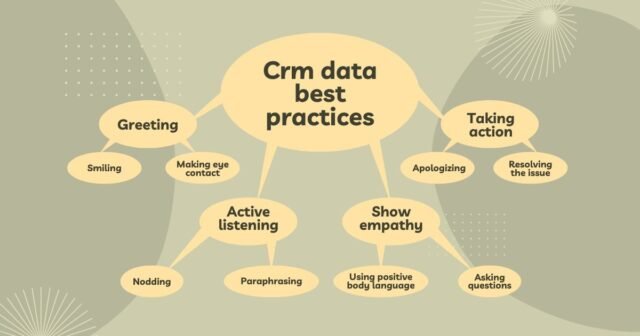Efficient CRM systems have become the backbone of modern business operations. At the heart of it all lies CRM data entry, an essential but often overlooked process that powers customer relationship management. With clean, accurate, and consistent data, your business can optimize decision-making, improve customer relationships, and unlock revenue opportunities.
But here’s the catch: Too often, businesses fail to implement effective CRM data entry practices, leading to disorganized systems and missed opportunities.
This blog will walk you through the best practices for CRM data entry and how you can set up your business for success. Whether you’re new to CRM systems or looking to improve your existing processes, these insights will help you maximize your CRM’s potential.
The importance of accurate data entry
Accurate data entry is essential to understanding your customers, LPs, partners, or portfolio companies and maximizing the customer experience. It enables firms and sales teams to make informed, data-driven decisions, tailor their strategies effectively, and provide personalized solutions, which lead to higher retention and customer success.
Effective CRM data entry is especially important in enterprise sales, which typically involves longer sales cycles, more stakeholders, and greater revenue potential. All of this requires more data input, data management, and a greater importance in getting the details right.
For example, when deals get put on hold, take longer to close, or there are multiple sales representatives covering the same account, it’s crucial to have reliable, up-to-date information about your organization’s history of interactions with customers so you can avoid costly miscommunications.
Turning CRM data into insights
When CRM data is complete, it can provide more than basic contact or customer data and sales information. Instead, by analyzing your CRM data at an aggregate level, you can uncover key insights into customer, LP, partner, or portfolio company behaviors, preferences, and needs—all of which form the basis of relationship intelligence and can help enhance the customer experience and drive revenue.
When you analyze the customer data in your CRM system, you can glean relationship intelligence insights that help firms and sales representatives close more deals. For example, you can uncover overlooked connections and identify the warmest path of introduction to a prospect.
Benefits of Proper CRM Data Entry
Before we jump into best practices, here’s what you stand to gain from cleaning up your CRM data entry process:
- Accurate decision-making with reliable customer data.
- Stronger customer relationships through personalized and timely interactions.
- Higher productivity thanks to reduced time spent looking for or fixing data.
- Improved campaign performance by targeting the right audience segments.
- Cost savings by minimizing waste caused by data errors or inefficiencies.
Now, here’s how you can achieve those benefits and more by following CRM data entry best practices.
Best Practices for CRM Data Entry
1. Standardize Data Formats
Consistency is key. Standardizing your data formats ensures uniformity across the board and avoids errors caused by variations in how data is entered.
- Use dropdown menus for fields like job title, industry, or lead source.
- Ensure date formats (e.g., MM/DD/YYYY) are consistent for accurate reporting.
- Establish naming conventions for key fields, such as account names or file uploads.
By creating clear entry guidelines, your team can reduce errors and improve data quality.
2. Prioritize Accuracy Over Speed
It’s tempting to rush through data entry tasks, especially when under pressure. But speed often leads to mistakes like typos, incomplete fields, or duplicate records.
Take the time to verify information before entering it into the system, and regularly audit existing records for errors. Tools like AI-powered spell checkers or autofill suggestions can also ensure errors are minimized.
3. Enforce Required Fields
Not all data fields are equally important. To avoid incomplete records, set mandatory fields for critical customer information such as contact details, lead source, and key touchpoints.
For example, make “Email Address” or “Phone Number” required when adding a new contact to your database. This ensures you’re capturing essential information every time.
4. Conduct Regular Data Audits
No matter how diligent you are, data degrades over time. People change email addresses, switch jobs, and move locations. Maintaining a high-quality database requires proactive upkeep.
- Schedule periodic data cleansing to remove duplicates, fix inaccuracies, and delete stale records.
- Use automated tools within platforms like Salesforce or HubSpot for easier data cleanup.
These regular audits keep your CRM accurate and reliable for day-to-day operations.
5. Use Automation for Routine Tasks
Manual data entry can be time-consuming and error-prone, but automation tools can save the day.
- Automate data imports from lead forms or third-party integrations to minimize manual input.
- Set up workflows to update related fields automatically (e.g., updating last contact date after an email is sent).
- Schedule alerts or reminders for missing or incomplete data.
6. Train Your Team
Your CRM strategy is only as strong as the people executing it. Train your team on the importance of accurate data entry, as well as the guidelines for inputting, managing, and updating records.
Common Pitfalls to Avoid
While implementing these best practices, be mindful of common mistakes that can undermine your efforts:
- Failing to document data entry protocols, leaving team members confused.
- Not maintaining data hygiene frequently, leading to “dirty” databases.
- Overloading fields with unnecessary inputs that confuse users.
- Ignoring data validation tools, which can flag errors automatically.
Avoiding these pitfalls ensures your CRM data management process is as efficient and effective as possible.
Tools to Support Your CRM Data Entry
Here are some tools that can enhance your data entry processes:
- Data Enrichment Tools: Platforms like Clearbit or ZoomInfo add customer insights directly to your CRM.
- Data Quality Tools: Products like RingLead or Validity ensure clean, accurate data with features like deduplication and field validation.
- AI-Powered CRMs: Advanced systems like HubSpot or Zoho streamline and enhance CRM data management through AI-based automation.
Moving Forward With Confidence
CRM data entry is more than a routine task; it’s the foundation that keeps your customer relationship management system running smoothly. By implementing these best practices, you can empower your sales, marketing, and customer success teams with reliable data and actionable insights.
Remember, a successful CRM strategy starts with good data. Take your first step today by conducting a data audit or automating repetitive tasks within your CRM platform. Small changes can lead to monumental results.
FAQs
What does a CRM do?
A CRM, or customer relationship management system, helps organizations manage their customer interactions and relationships. It keeps track of customer information, helps streamline sales processes, and ultimately aims to improve business relationships and outcomes.
What is CRM data entry?
CRM data entry involves inputting deal-related data and customer data (including contact, demographic, and deal information) into a CRM, either manually or via automated tools. The result is a more holistic picture of prospect and customer interactions, preferences, and needs.
What does CRM data do?
CRM data helps organizations manage customer information. It provides important information for firms and sales teams to improve customer relationships, make more informed decisions, and drive business growth.








